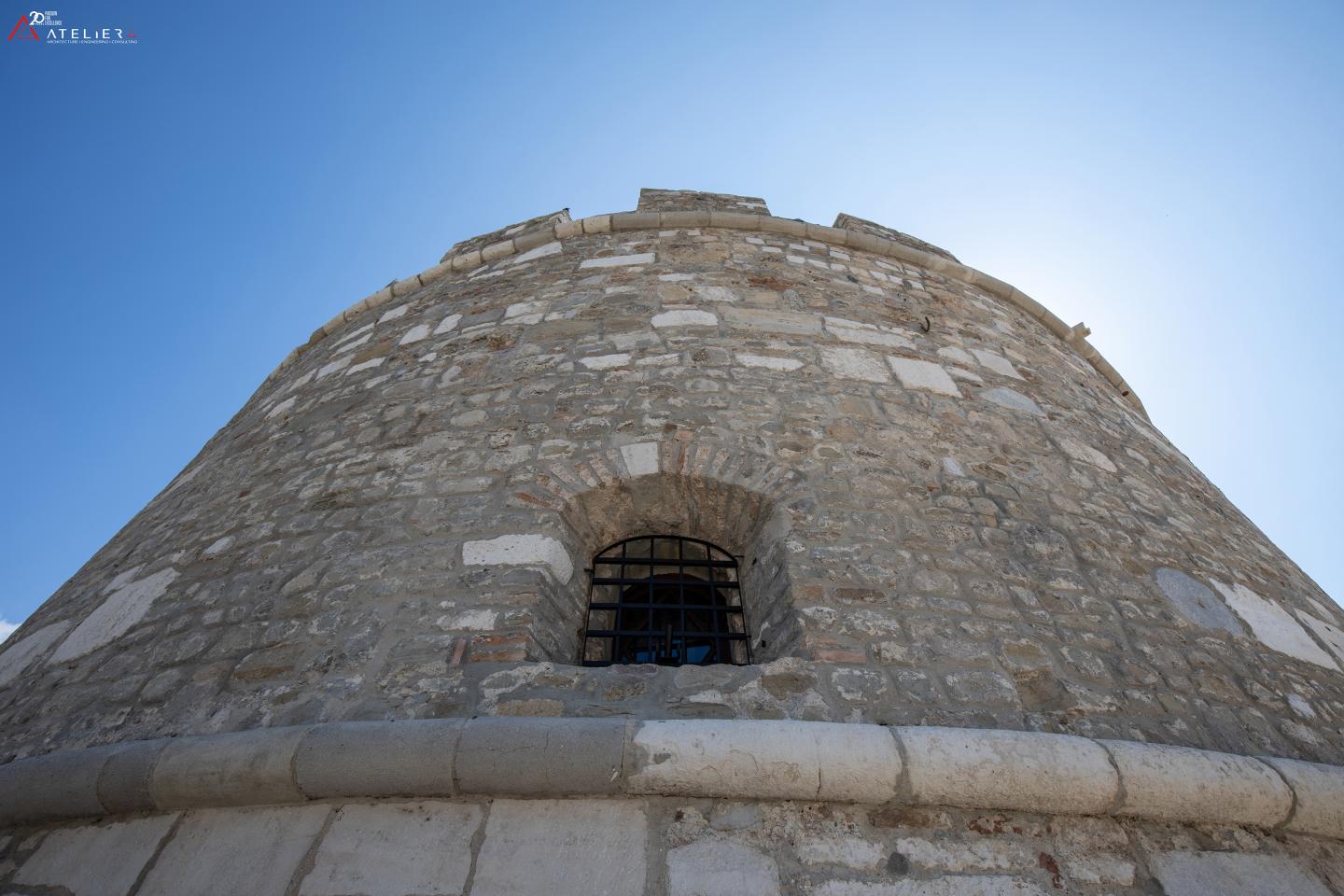The main conceptual idea of the project was to reminisce on the historical and visual memory of Durrës. The facilities it offers make it accessible at any time of the day, regardless of the visitor's itinerary. Visiting this heritage site is not only to gain knowledge about local history and culture, but also for learning, entertainment and a daily escapade.
The Venetian tower is part of Durrës’ Byzantine fortress which was considered one of the most powerful fortresses on the west coast of the Adriatic Sea during the Middle Ages. Due to its strategic position and history, the tower is one of the most visited settlements, hence the historical, artistic and architectural peculiarities are preserved. This means that the restoration was carried out without producing substantial modifications of the structure itself, using the traditional intervention techniques and methodologies whenever possible, so as to conduct the conservation of the tower as a whole, with the complexity of its physical, morphological and urban conditions. Additionally, a new approach was implemented as the monument welcomed recent equipment and projections to display graphic and visual effects for an enhanced perception of space and visitor experience.
Albania's second-biggest city is Durrës. With a population of more than 200,000, the city serves as the hub of Durrës district and prefecture. It is among Albania's most significant and ancient cities in terms of its economy. The city of Durrës experiences year-round tourism due to its strategic position, presence of a major port, and the values it upholds. The project’s idea to maintain the building's qualities stems from the necessity to protect architectural legacy, particularly in light of the November 2019 earthquake damage that brought attention to the museum's deterioration and the ensuing need for restoration. When it comes to surface restoration, the primary types of deterioration were found by conducting a survey, identifying and documenting any type of chemical or physical deterioration, and choosing the best methods to enable repair. Since the tower will serve as a focal point and information center for Durrës, connecting the historical and archaeological monuments in Durrës and throughout Albania, the restoration project has an impact on the new design through the use of cutting-edge technology and a modern aesthetic.
Construction/Materials and Structure.
Besides the consolidation of the monument to achieve its stability and long-term resistance, the project focused on generating a narrative in the interior. The use of the latest sound technology and its careful integration with the monument results in an educational, explanatory and interactive space. Technologies such as augmented reality and virtual reality are engaging and add experiential value to the Tower. Audio-visual content makes for an interactive and impactful human experience inside-out. It’ll set a pioneering example in keeping the heritage sites evolving according to the viewers’ needs.
2021
2023
Surface: 208.67 m²
Authors: “Atelier 4” sh.p.k
Collaborators: “The United Nations Office for Project Services” (UNOPS) and The Ministry of Culture of Albania.









